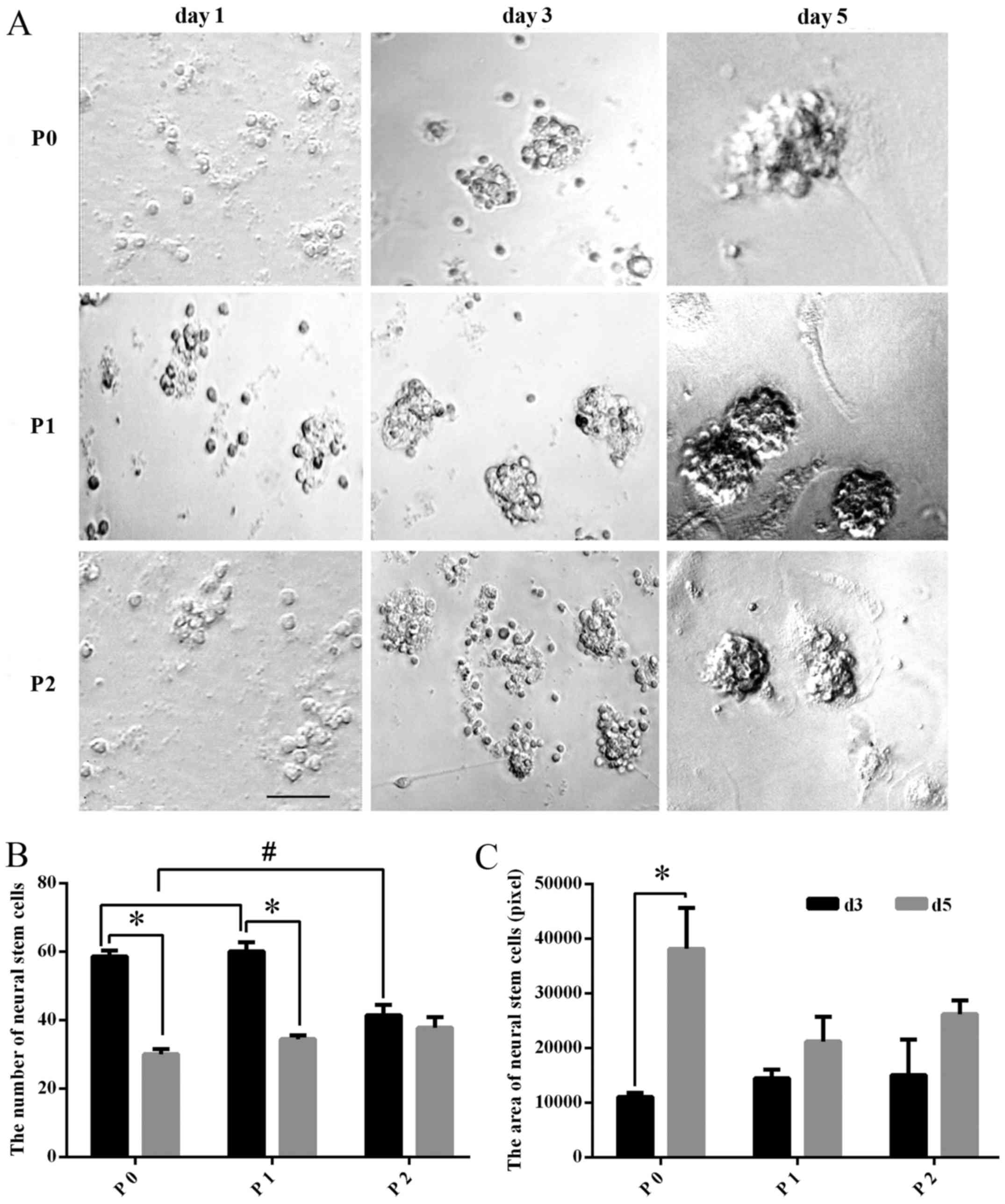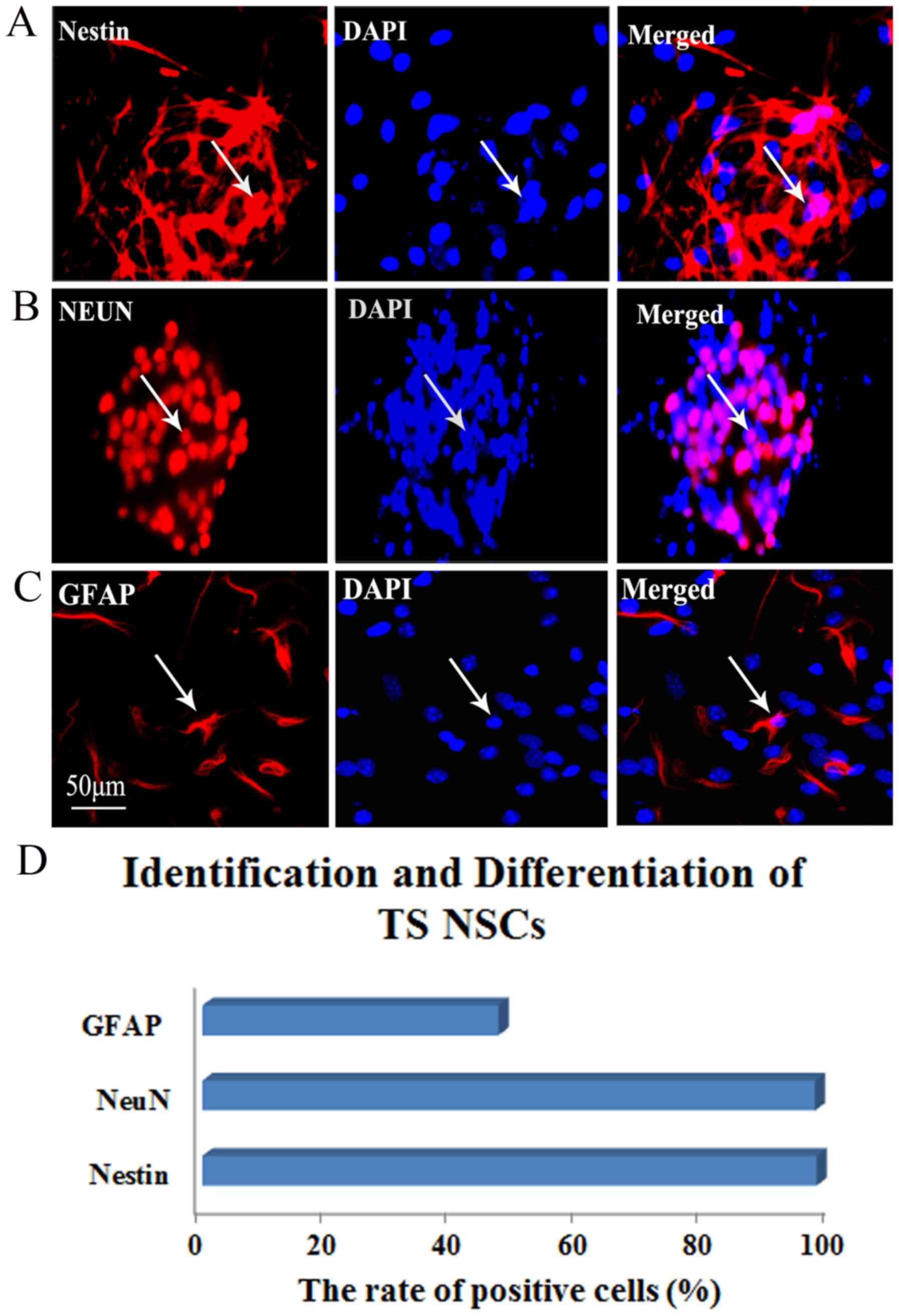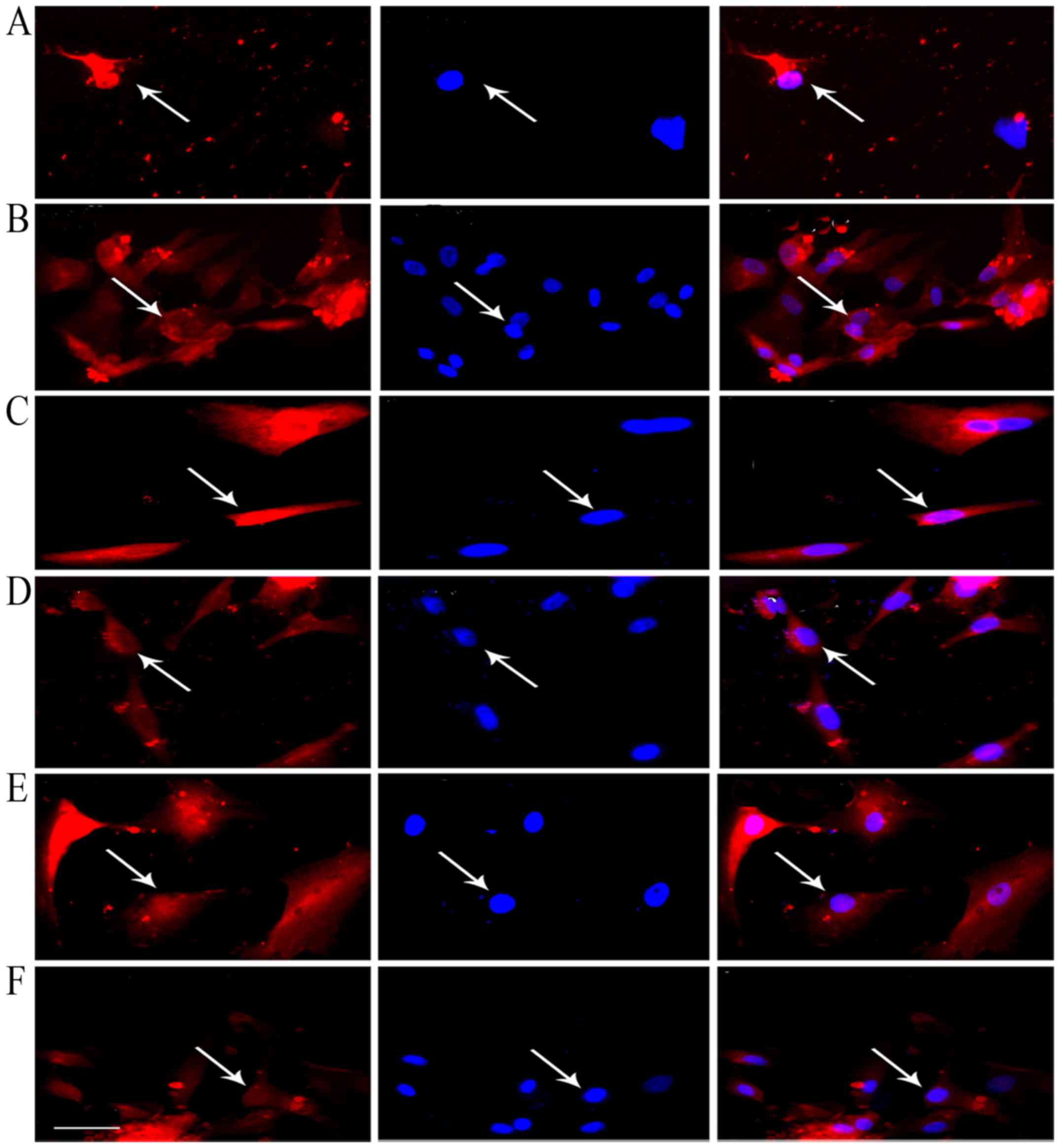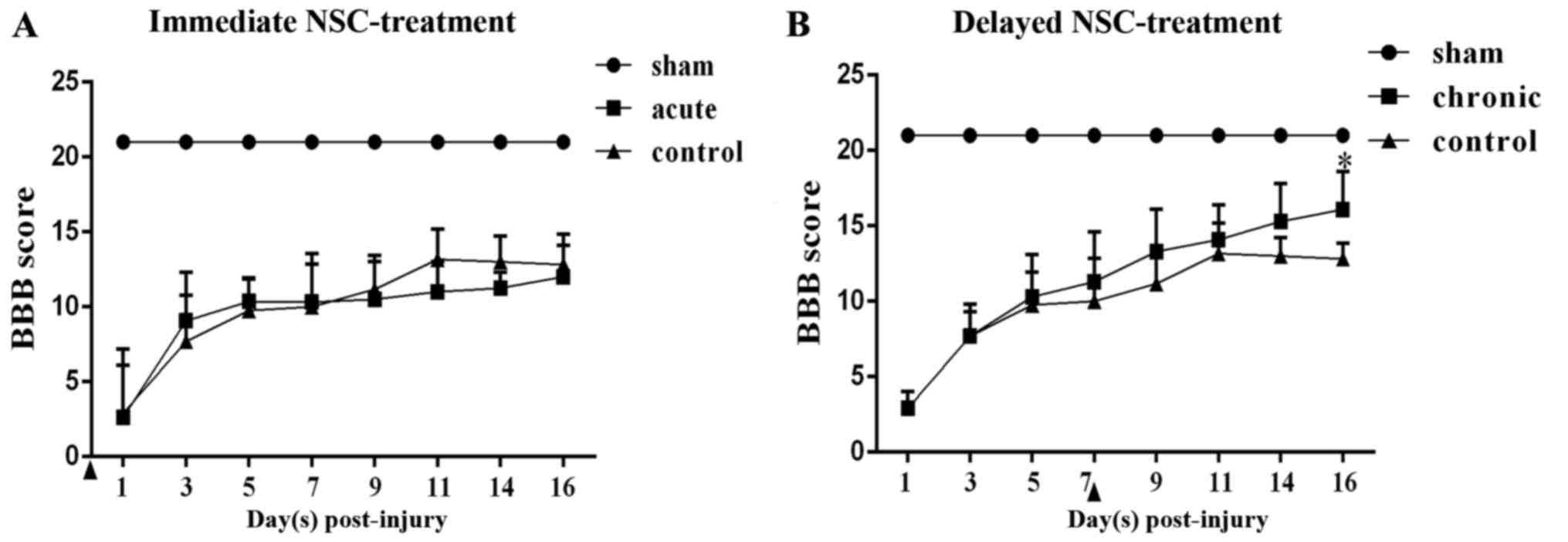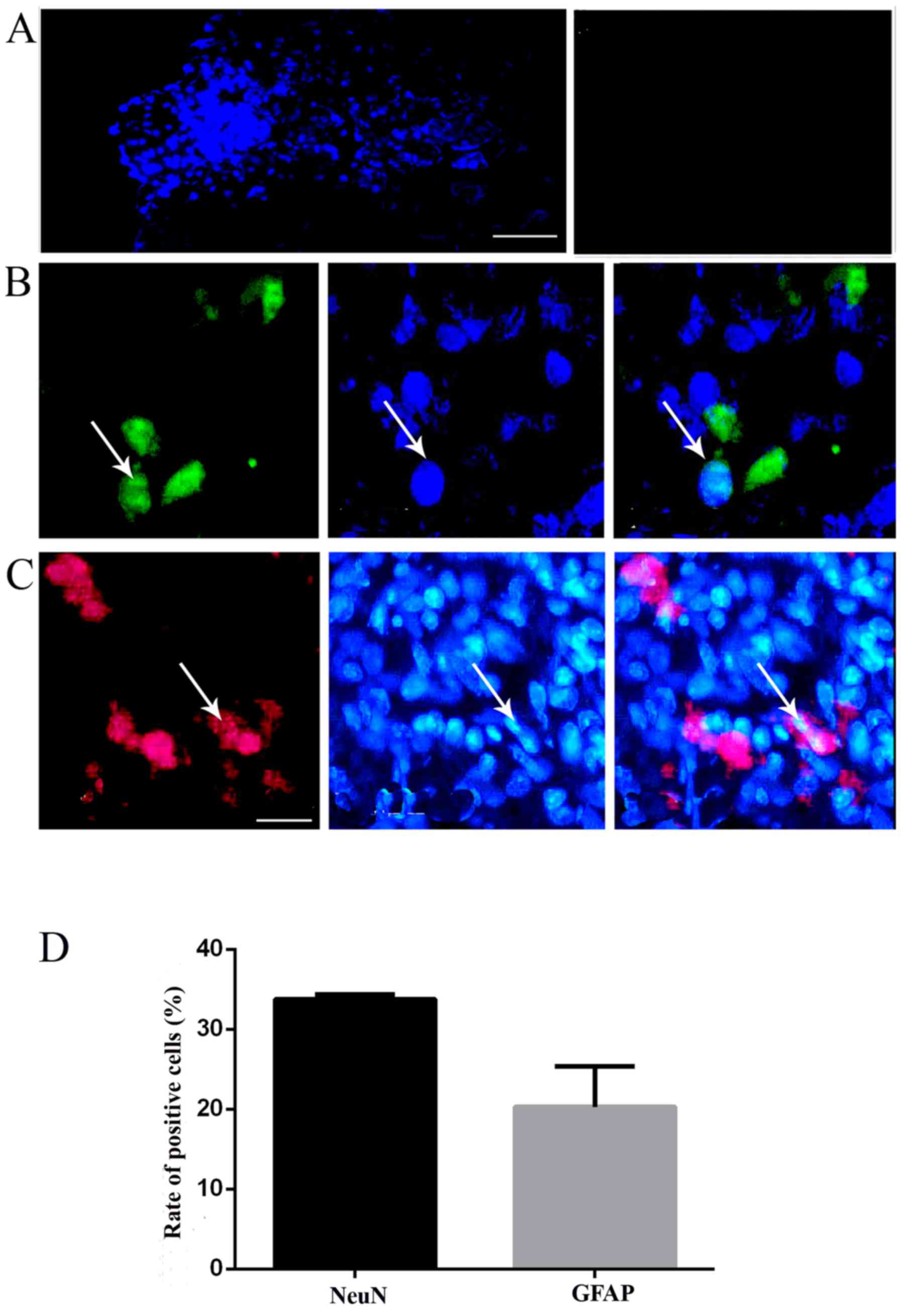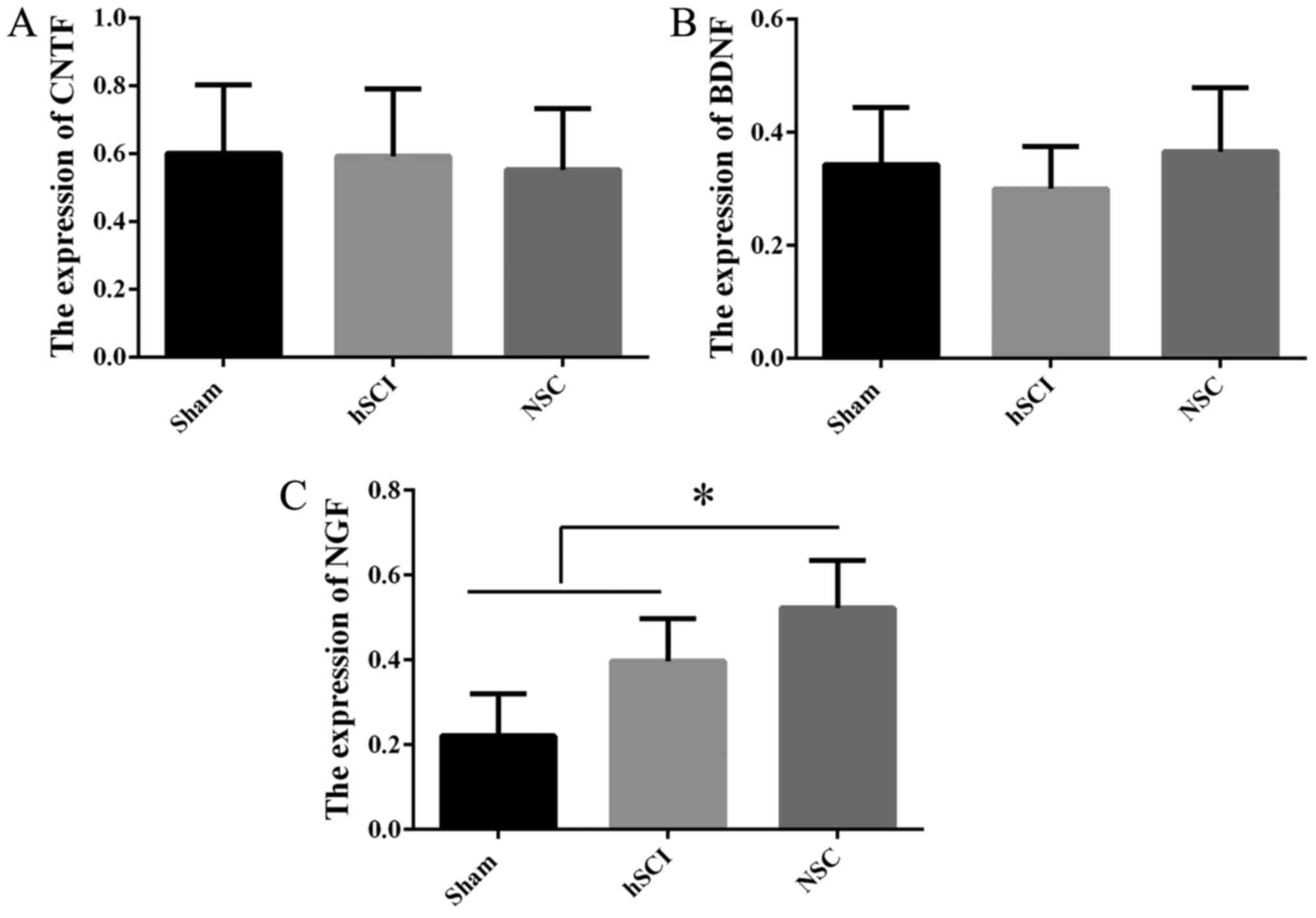|
1
|
Jain NB, Ayers GD, Peterson EN, Harris MB,
Morse L, O'Connor KC and Garshick E: Traumatic spinal cord injury
in the United States, 1993-2012. JAMA. 313:2236–2243. 2015.
View Article : Google Scholar : PubMed/NCBI
|
|
2
|
Löfvenmark I, Norrbrink C, Nilsson-Wikmar
L, Hultling C, Chakandinakira S and Hasselberg M: Traumatic spinal
cord injury in Botswana: Characteristics, aetiology and mortality.
Spinal Cord. 53:150–154. 2015. View Article : Google Scholar
|
|
3
|
Rognoni C, Fizzotti G, Pistarini C and
Quaglini S: Quality of life of patients with spinal cord injury in
Italy: Preliminary evaluation. Stud Health Technol Inform.
205:935–939. 2014.PubMed/NCBI
|
|
4
|
Dooley D, Vidal P and Hendrix S:
Immunopharmacological intervention for successful neural stem cell
therapy: New perspectives in CNS neurogenesis and repair. Pharmacol
Ther. 141:21–31. 2014. View Article : Google Scholar
|
|
5
|
Whittemore SR: Neuronal replacement
strategies for spinal cord injury. J Neurotrauma. 16:667–673. 1999.
View Article : Google Scholar : PubMed/NCBI
|
|
6
|
Park KI, Liu S, Flax JD, Nissim S, Stieg
PE and Snyder EY: Transplantation of neural progenitor and stem
cells: Developmental insights may suggest new therapies for spinal
cord and other CNS dysfunction. J Neurotrauma. 16:675–687. 1999.
View Article : Google Scholar : PubMed/NCBI
|
|
7
|
Neirinckx V, Agirman G, Coste C, Marquet
A, Dion V, Rogister B, Franzen R and Wislet S: Adult bone marrow
mesenchymal and neural crest stem cells are chemoattractive and
accelerate motor recovery in a mouse model of spinal cord injury.
Stem Cell Res Ther. 6:2112015. View Article : Google Scholar : PubMed/NCBI
|
|
8
|
Barnabé-Heider F and Frisén J: Stem cells
for spinal cord repair. Cell Stem Cell. 3:16–24. 2008. View Article : Google Scholar : PubMed/NCBI
|
|
9
|
Enzmann GU, Benton RL, Talbott JF, Cao Q
and Whittemore SR: Functional considerations of stem cell
transplantation therapy for spinal cord repair. J Neurotrauma.
23:479–495. 2006. View Article : Google Scholar : PubMed/NCBI
|
|
10
|
Gross CG: Neurogenesis in the adult brain:
death of a dogma. Nat Rev Neurosci. 1:67–73. 2000. View Article : Google Scholar
|
|
11
|
Doetsch F: The glial identity of neural
stem cells. Nat Neurosci. 6:1127–1134. 2003. View Article : Google Scholar : PubMed/NCBI
|
|
12
|
Gage FH: Mammalian neural stem cells.
Science. 287:1433–1438. 2000. View Article : Google Scholar : PubMed/NCBI
|
|
13
|
Bonaguidi MA, Wheeler MA, Shapiro JS,
Stadel RP, Sun GJ, Ming GL and Song H: In vivo clonal analysis
reveals self-renewing and multipotent adult neural stem cell
characteristics. Cell. 145:1142–1155. 2011. View Article : Google Scholar : PubMed/NCBI
|
|
14
|
Lu P, Jones LL, Snyder EY and Tuszynski
MH: Neural stem cells constitutively secrete neurotrophic factors
and promote extensive host axonal growth after spinal cord injury.
Exp Neurol. 181:115–129. 2003. View Article : Google Scholar : PubMed/NCBI
|
|
15
|
Blesch A and Tuszynski MH: GDNF gene
delivery to injured adult CNS motor neurons promotes axonal growth,
expression of the trophic neuropeptide CGRP, and cellular
protection. J Comp Neurol. 436:399–410. 2001. View Article : Google Scholar : PubMed/NCBI
|
|
16
|
Grill R, Murai K, Blesch A, Gage FH and
Tuszynski MH: Cellular delivery of neurotrophin-3 promotes
corticospinal axonal growth and partial functional recovery after
spinal cord injury. J Neurosci. 17:5560–5572. 1997.PubMed/NCBI
|
|
17
|
McTigue DM, Horner PJ, Stokes BT and Gage
FH: Neurotrophin-3 and brain-derived neurotrophic factor induce
oligodendrocyte proliferation and myelination of regenerating axons
in the contused adult rat spinal cord. J Neurosci. 18:5354–5365.
1998.PubMed/NCBI
|
|
18
|
Karimi-Abdolrezaee S and Eftekharpour E:
Stem cells and spinal cord injury repair. Adv Exp Med Biol.
760:53–73. 2012. View Article : Google Scholar
|
|
19
|
Wang D and Zhang J: Effects of hypothermia
combined with neural stem cell transplantation on recovery of
neurological function in rats with spinal cord injury. Mol Med Rep.
11:1759–1767. 2015. View Article : Google Scholar
|
|
20
|
Hu YR, Chen G, Wei Y, Wan H, Li JH, Chang
WJ, Zhang XL, Liu R and Sun ZZ: In vitro culture, induction and
differentiation of neural stem cells from rat embryo. J Clin
Rehabilitative Tissue Eng Res. 13:3651–3655. 2009.
|
|
21
|
Hu YY, Duan XH, Chen M and Wang D:
Proliferation and differentiation of neural stem cells from newborn
mouse hippocampi in vitro. Chin J Tissue Eng Res. 17:79–85.
2013.
|
|
22
|
Yan SX, Liu XM, Xiang P, Wang P and Wang
D: Culture and differentiation of cynomolgus monkey neural stem
cells. J Clin Rehabilitative Tissue Eng Res. 13:8821–8824.
2009.
|
|
23
|
Razavi S, Razavi MR, Ahmadi N and Kazemi
M: Estrogen treatment enhances neurogenic differentiation of human
adipose derived stem cells in vitro. Iran J Basic Med Sci.
18:799–804. 2015.PubMed/NCBI
|
|
24
|
Janecka JE, Miller W, Pringle TH, Wiens F,
Zitzmann A, Helgen KM, Springer MS and Murphy WJ: Molecular and
genomic data identify the closest living relative of primates.
Science. 318:792–794. 2007. View Article : Google Scholar : PubMed/NCBI
|
|
25
|
Fan Y, Huang ZY, Cao CC, Chen CS, Chen YX,
Fan DD, He J, Hou HL, Hu L, Hu XT, et al: Genome of the Chinese
tree shrew. Nat Commun. 4:14262013. View Article : Google Scholar : PubMed/NCBI
|
|
26
|
Ruan P, Yang C, Su J, Cao J, Ou C, Luo C,
Tang Y, Wang Q, Yang F, Shi J, et al: Histopathological changes in
the liver of tree shrew (Tupaia belangeri chinensis) persistently
infected with hepatitis B virus. Virol J. 10:3332013. View Article : Google Scholar : PubMed/NCBI
|
|
27
|
Wang Q, Yang C, Su JJ, Cao J, Ou C, Yang
F, Zhang JJ, Shi JL, Wang DP, Wang XJ, et al: Factors influencing
long-term hepatitis B virus infection of the tree shrew (Tupaia
belangeri chinensis) as an in vivo model of chronic hepatitis B.
Zhonghua Gan Zang Bing Za Zhi. 20:654–658. 2012.PubMed/NCBI
|
|
28
|
Xu G, Gao Z, He W, Ma Y, Feng X, Cai T, Lu
F, Liu L and Li W: microRNA expression in hepatitis B virus
infected primary treeshrew hepatocytes and the independence of
intracellular miR-122 level for de novo HBV infection in culture.
Virology. 448:247–254. 2014. View Article : Google Scholar
|
|
29
|
Grytz R and Siegwart JT Jr: Changing
material properties of the tree shrew sclera during minus lens
compensation and recovery. Invest Ophthalmol Vis Sci. 56:2065–2078.
2015. View Article : Google Scholar : PubMed/NCBI
|
|
30
|
Wang J, Zhou QX, Tian M, Yang YX and Xu L:
Tree shrew models: A chronic social defeat model of depression and
a one-trial captive conditioning model of learning and memory.
Dongwuxue Yanjiu. 32:24–30. 2011.PubMed/NCBI
|
|
31
|
Li SA, Lee WH and Zhang Y: Two bacterial
infection models in tree shrew for evaluating the efficacy of
antimicrobial agents. Dongwuxue Yanjiu. 33:1–6. 2012.PubMed/NCBI
|
|
32
|
Basso DM, Beattie MS and Bresnahan JC: A
sensitive and reliable locomotor rating scale for open field
testing in rats. J Neurotrauma. 12:1–21. 1995. View Article : Google Scholar : PubMed/NCBI
|
|
33
|
Coumans JV, Lin TT, Dai HN, MacArthur L,
McAtee M, Nash C and Bregman BS: Axonal regeneration and functional
recovery after complete spinal cord transection in rats by delayed
treatment with transplants and neurotrophins. J Neurosci.
21:9334–9344. 2001.PubMed/NCBI
|
|
34
|
Wu S, Suzuki Y, Kitada M, Kitaura M,
Kataoka K, Takahashi J, Ide C and Nishimura Y: Migration,
integration, and differentiation of hippocampus-derived neurosphere
cells after transplantation into injured rat spinal cord. Neurosci
Lett. 312:173–176. 2001. View Article : Google Scholar : PubMed/NCBI
|
|
35
|
Yi BR, Kim SU and Choi KC: Development and
application of neural stem cells for treating various human
neurological diseases in animal models. Lab Anim Res. 29:131–137.
2013. View Article : Google Scholar : PubMed/NCBI
|
|
36
|
Reynolds BA and Weiss S: Generation of
neurons and astrocytes from isolated cells of the adult mammalian
central nervous system. Science. 255:1707–1710. 1992. View Article : Google Scholar : PubMed/NCBI
|
|
37
|
Vroemen M, Aigner L, Winkler J and Weidner
N: Adult neural progenitor cell grafts survive after acute spinal
cord injury and integrate along axonal pathways. Eur J Neurosci.
18:743–751. 2003. View Article : Google Scholar : PubMed/NCBI
|
|
38
|
Fan Y, Yu D and Yao YG: Tree shrew
database (TreeshrewDB): A genomic knowledge base for the Chinese
tree shrew. Sci Rep. 4:71452014. View Article : Google Scholar : PubMed/NCBI
|
|
39
|
Dromard C, Guillon H, Rigau V, Ripoll C,
Sabourin JC, Perrin FE, Scamps F, Bozza S, Sabatier P, Lonjon N, et
al: Adult human spinal cord harbors neural precursor cells that
generate neurons and glial cells in vitro. J Neurosci Res.
86:1916–1926. 2008. View Article : Google Scholar : PubMed/NCBI
|
|
40
|
Nishimura S, Yasuda A, Iwai H, Takano M,
Kobayashi Y, Nori S, Tsuji O, Fujiyoshi K, Ebise H, Toyama Y, et
al: Time-dependent changes in the microenvironment of injured
spinal cord affects the therapeutic potential of neural stem cell
transplantation for spinal cord injury. Mol Brain. 6:32013.
View Article : Google Scholar : PubMed/NCBI
|
|
41
|
Tsuji O, Miura K, Fujiyoshi K, Momoshima
S, Nakamura M and Okano H: Cell therapy for spinal cord injury by
neural stem/progenitor cells derived from iPS/ES cells.
Neurotherapeutics. 8:668–676. 2011. View Article : Google Scholar : PubMed/NCBI
|
|
42
|
Kamei N, Tanaka N, Oishi Y, Hamasaki T,
Nakanishi K, Sakai N and Ochi M: BDNF, NT-3, and NGF released from
transplanted neural progenitor cells promote corticospinal axon
growth in organotypic cocultures. Spine. 32:1272–1278. 2007.
View Article : Google Scholar : PubMed/NCBI
|
|
43
|
Weishaupt N, Blesch A and Fouad K: BDNF:
The career of a multifaceted neurotrophin in spinal cord injury.
Exp Neurol. 238:254–264. 2012. View Article : Google Scholar : PubMed/NCBI
|
|
44
|
Maisonpierre PC, Belluscio L, Friedman B,
Alderson RF, Wiegand SJ, Furth ME, Lindsay RM and Yancopoulos GD:
NT-3, BDNF, and NGF in the developing rat nervous system: Parallel
as well as reciprocal patterns of expression. Neuron. 5:501–509.
1990. View Article : Google Scholar : PubMed/NCBI
|



